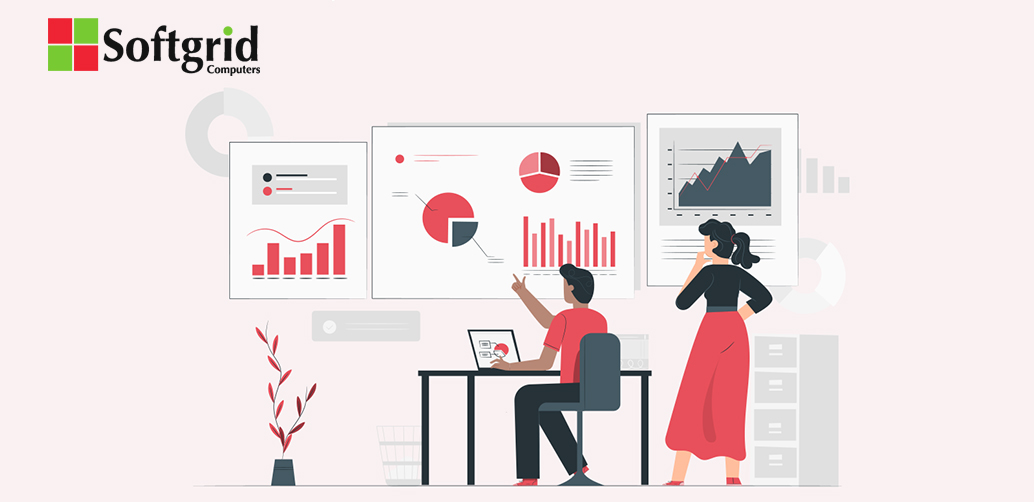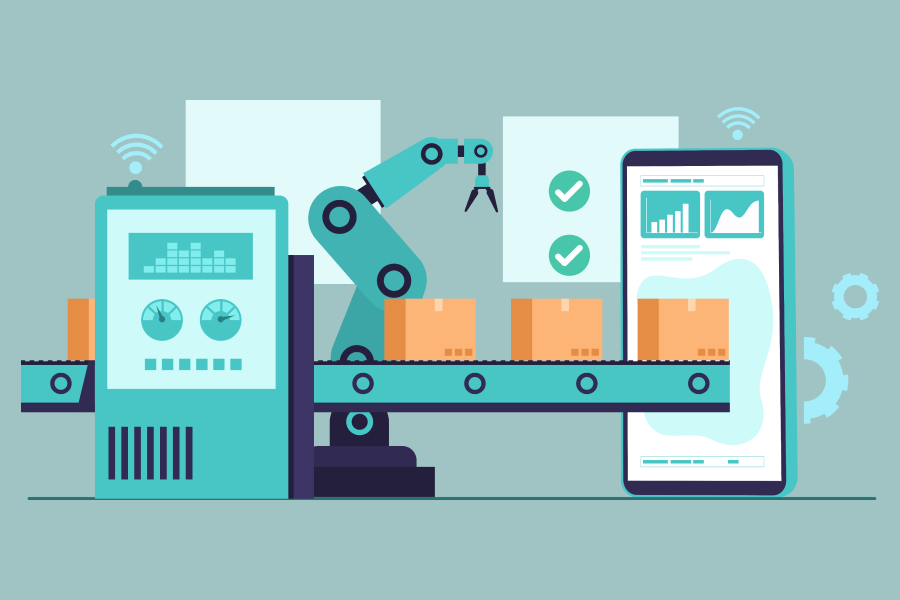The Healthcare industry in 2022 is capable of collecting a huge amount of medical data from the population-majority. When the advanced Healthcare Information Technologies are integrated with this data a deep-analysis can be processed which reveals vital insights into population health. The data which previously was not well stored and managed is also being held intact by the use of technologies like Cloud Infrastructure and Blockchain. Multiple kinds of analytics in healthcare are implemented on a huge set of data by a panel of specialists. Various medical processes are more fast-paced nowadays with the use of catalysts like Big Data Analytics.
Big Data
The type of data sets which are huge in size or have various complexities that cannot be handled through conventional data processing software is known as Big Data. Big Data doesn’t include just the analysis part but also includes the data identification, storing data, transferring of this data and also updating of the recorded data. When a set of data belongs to a particular category with multiple columns and attributes then the complexity of the data set is much higher. If the general data processing software is used with such data then the latency and false reporting probability spike up immensely.
The prime feature that makes a Data Set be termed ‘Big Data’ is the presence of data variety, velocity and volume in a colossal range. You might be a little confused with the term velocity, the term data velocity suggests the speed at which more data gets generated, recorded and distributed. The more advanced other software technologies get the further increases the data complexity with new sources of data and structures for origination. The top examples of Big Data sources in 2022 are sensors, IoT devices, log files, audio-video, applications involving transactions, mobile devices, social media and AI-based databases. Most of these data sets get generated in real-time and the scalability of it lets them fall into the Big Data Category.
Data-Driven Healthcare for Treatment and Management
Big Data Analytics is successfully being executed and integrated with various fragments of healthcare with multiple data-driven benefits being witnessed by the medical facilities and also by the healthcare organization management division. Big Data analytics can be considered one of the modern disruptive technologies in Healthcare. In this sector, the sources of data are often remote data transferring medical devices, devices used in diagnosis, databases of patients and similar monitoring devices that generate and transfer data across an organization’s operational healthcare system. Various healthcare facilities across the world are using the insights obtained from Big Data Analytics and implementing them in their existing healthcare structure in the form of strategic adjustments.
The healthcare scenario of a population faces different kinds of threats and thus a new treatment setup is much easier to execute if the future necessity can be logically predicted using Big Data Analytics. Big Data Analytics uses data mining strategies in identifying a correlation between datasets and to build prediction models. Among all the data sets requiring attention- the most crucial ones are bioinformatics, medical reports and the health history of patients. It’s not inaccurate to say that nearly every segment of the healthcare industry including the health policy system is benefiting from the extraordinary output of Big Data Analytics.
Ways in which Big Analytics are having a Direct Impact on Healthcare
Integrated use with Electronic Health Records(EHR)- The global adaptation of Electronic Health Records can be considered revolutionary for the healthcare industry. For each patient, an EHR file can be assigned which holds all the vital details in relation to the person’s health history. The EHR file would hold all details including test results, change in symptoms, allergies and various similar factors which are crucial aspects of a person’s health or medical condition. These EHRs are completely digital in format and are stored either in cloud infrastructure or under cryptographic encryptions that let the data remain secure while being intact for access by professional healthcare members.
Some EHR models allow patients to have access to their own digital records. There are multiple benefits to it among which the prime advantage is the enhanced follow-through treatments they receive. EHRs when amalgamated together in a huge number become Big Data. These EHRs are also sometimes shared by the authority with some medical professionals or establishments outside the organization through a secure viewing access portal. According to research statistics, about ninety-four percent of hospitals in the United States have adopted the EHR system.
Predictive Analysis due to Healthcare- Another major healthcare advantage that has been bestowed by Big Data is called predictive analytics. As the name suggests, predictive analytics involves forming a logical medical prediction for a patient by the use of stored data present in the healthcare organization. This lets the medical professionals choose the best treatment method for a particular patient. Along with the use of machine learning algorithms and AI a personalized treatment model can be built that will have the maximum chance of curing the patient.
EHR databases are ideal models for obtaining predictive analysis outputs. Research collaborations have also taken place among organizations to share the EHR databases to have a more profound and huge set of data for conducting predictive analysis. The data-driven healthcare approach has often resulted in finding unique treatments that have also shown life-saving capabilities. For patients who get admitted to a medical facility with multiple medical problems and complicated case history, for them doctors largely prefer to take the aid of Predictive Analytics.
Ideal Staff Arrangement- When medical professionals study the population health of a particular region several vital facts can be obtained. The use of Big Data Analytics along with advanced Information Technologies lets a medical organization shape perfect treatment strategies. When the most common diseases and health problems get identified for a region and can be differentiated based on seasons, then the medical infrastructures can be built more flexibly and robustly.
The administrative management of a healthcare facility would better understand which sectors of healthcare would require more specialist doctors to provide the specific required treatments. This means for example if the region receives the most number of patients on a daily average for the department of Oncology and Gastroenterology then these departments should have more medical staff. The state-of-the-art medical equipment should be present in this department with utmost functionality at all times. This would help in yielding accurate and paramount treatment experiences to the patients.
Predicting the Patient in-flow- The number of patients that would come for treatment on a daily average is also a crucial statistic for any medical facility. This allows healthcare management divisions to ideally distribute their staff across different shifts to maintain a balance in the institution’s functionality. In a sensitive sector like Healthcare, every step needs to be taken by checking its practical feasibility of it. Thus if such a situation happens that there is a lack of staff at some point and critical patients are waiting in queue to get the life-saving treatment then it might prove fatal for many and even scar the hospital or medical facility forever. On the other hand, if a hospital hires more staff and hosts more doctors than required then the expenditure and costs for running the facility ramp up majorly.
But the use of Big Data has not yet been noticed on a global scale for the purpose of patient inflow analysis and findings. The new medical establishments rather prefer to glance upon other hospitals and clinics in the nearby region. But the use of Big Data in this sector is totally relevant which has been proven by some hospitals across Europe who have been using it for patient management. The scientists and doctors have also created a website structured user interface in France that serves as a forecaster by predicting patient loads in the upcoming week or month and lets the organization make necessary arrangements for it.
The assistance of real-time analytics to doctors- The use of advanced healthcare gadgets and wearable devices has allowed an opportunity for the Healthcare Industry to receive real-time data sets for a particular patient and even for a large group who have similar diseases and health issues. The devices are able to constantly record data related to the patient’s vitals and store them in a cloud infrastructure. This data can be operated on by the use of Machine Learning and Artificial Intelligence to find analytical reports on the possible diagnosis and suitable treatment options.
Thus Big Data which can have real-time features holds the capability to provide healthcare assistance to the doctors so that the treatment-oriented decisions can be much more accurate. If a patient arrives at the hospital emergency department in need of immediate treatment then a perfect treatment can be used if the EHR file of the patient can be accessed. The Big Data Analytics would implement immediate analysis of the record in integration with the real-time vitals being monitored at the emergency ward. If this real-time data on patients gets accumulated across multiple organizations then the humongous Big Data Analytics can be used to identify several medical aspects of a population in relation to the socio-economic factors too. The remotely working analytical gadgets are also able to send depleting vital news in real-time so that the treating professionals can prevent any further deterioration.
Utmost security is demanded from Big Data Analytics
The Big Data formed from the information of each patient is vulnerable and delicate in terms of Security. In the past, there have been several breaches by hackers in healthcare organization databases and this means all Big Data structures should maintain enhanced security across servers with the use of encryption on data sets. At the end of the day, the data is considered to be legally owned by the patient and thus the organizations have the responsibility to provide protection. Several security experts suggest using the technology of pseudo anonymization and blockchain for securing Big Data. The Big Data Analytics software should build up a rigid administrative standard around it so that its implementation happens in an organized format on a global scale.

 Web and Full Stack
Web and Full Stack CMS and Frameworks
CMS and Frameworks Online Marketing
Online Marketing Cloud Services
Cloud Services ECommerce
ECommerce Mobile
Mobile



